|
Atterbury-Bakalar Air Museum
Ernie Pyle WWII Museum
Five Points Fire Museum
Fort Wayne
Firefighters Museum Freeman
Army Airfield Museum
Virgil "Gus"
Grissom Memorial
Hoosier Air Museum
Indiana Military
Museum
Indianapolis Fire Museum McClain
Military Museum
Military Honor
Park and Museum
Museum of the Soldier
National
Military History Center/Automotive and Carriage Museum National
Model Aviation Museum
Rolls-Royce Heritage Center, Allison Branch
Ropkey Armor Museum
Stutz Car Museum
Wayne County
Historical Museum
Indiana
Museums - Aviation, Military, Automotive and Fire
Museum
of the Soldier
Portland, IN
Date Visited: 9-20-2014
Portland is a small town
of about 6,300 residents and the county seat of Jay County which lies on
the border of Ohio in northeast Indiana. It is not the location
one would expect to find a very nice military museum with some first
class displays. But through the efforts of several persons the
Museum of the Soldier in Portland, IN is just that. Started in the
1980s by several military historians it now occupies the former
Coca-Cola bottling plant in Portland. I was unaware of the
existence of the Museum of the Soldier until the late summer of 2014
when I became aware that the museum was hosting a military vehicle show
at the nearby Jay county fairgrounds. I was able to visit both
locations which are shown below.
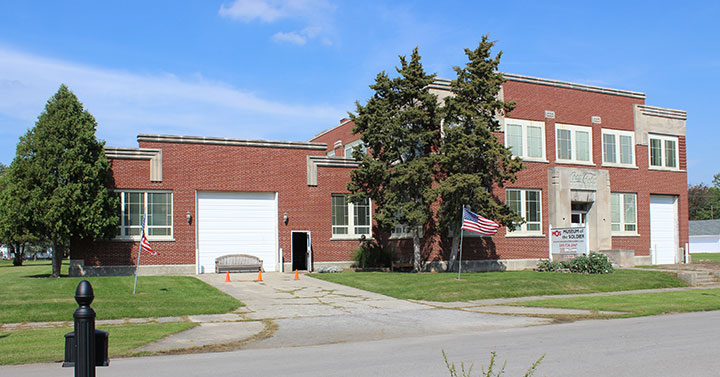
The home of the Museum of the Soldier in Portland, IN.
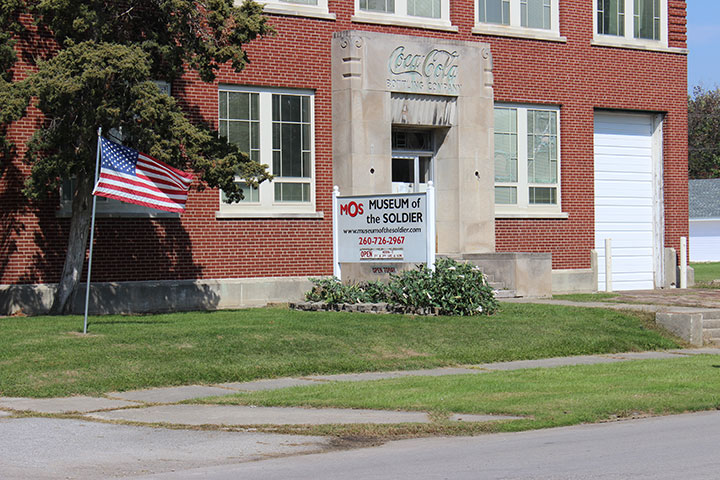
Located in the former Coca-Cola bottling plant, the museum has very
limited visiting hours during the summer. This is typical of
several museums in the state that are not set up financially to heat a
building of this size during the winter.
In the early 1900s the Coca-Cola company started licensing the bottling
of its product and by the 1920s there were over a 1,000 plants in the
USA. This one was one of them, being built in 1921.
Coca-Coal bottling plants went to war during WWII. At the request
of General Eisenhower Coca-Cola set up plants to supply the troops in
North Africa and by the end of the conflict there were 64 plants
operating around the world.
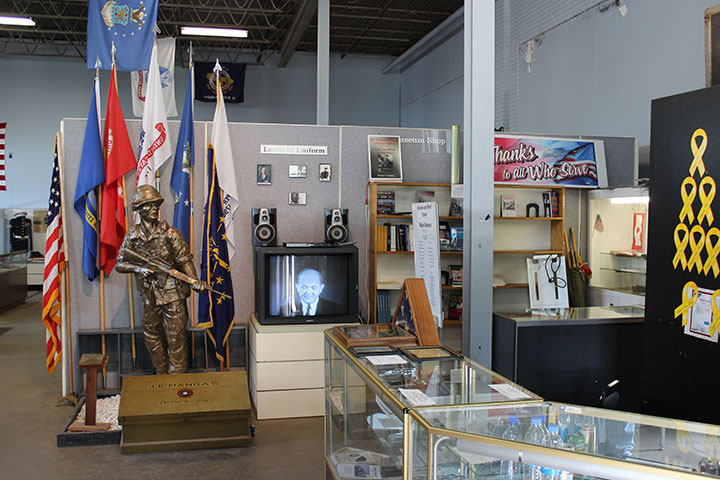
Stepping through the front door one finds a small gift shop at the
entrance.
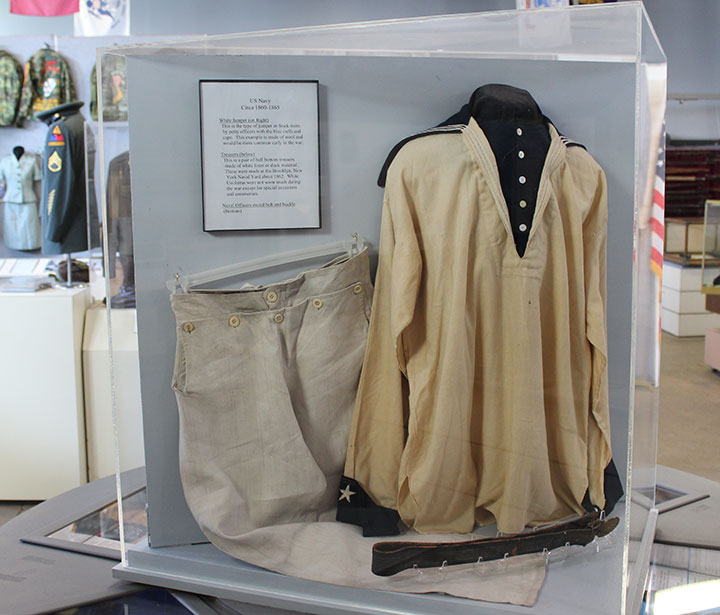
There are many military uniforms on display but this was my favorite in
the museum and the oldest. Shown in the display case is are US
Navy uniform parts from the Civil War. The jumper is made of wool
and was worn by petty officers. The bell bottom trousers were made
at the Brooklyn Naval yard in 1862 out of a duck material and the belt
is for an officer's sword.
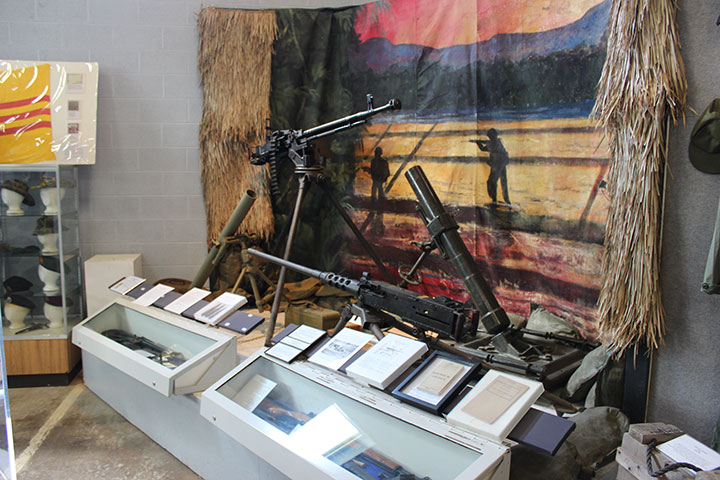
These weapons are part of the Vietnam display.
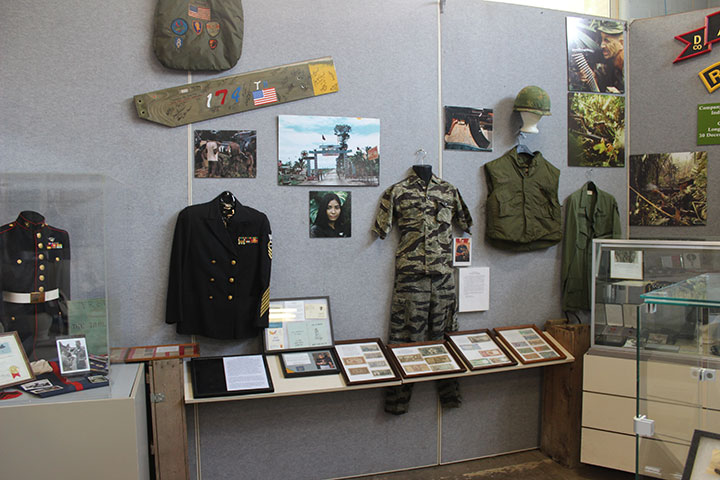
More of the Vietnam display. I was intrigued by the photo of the
young girl in the center of the wall and there was no explanation of why
her picture was there. I asked the docent on duty and he could not
tell me. She was wearing fatigue shirt similar to the "tiger"
camouflage one on display next to the photo. I guess this gives me
a reason to go back again some day and find out.
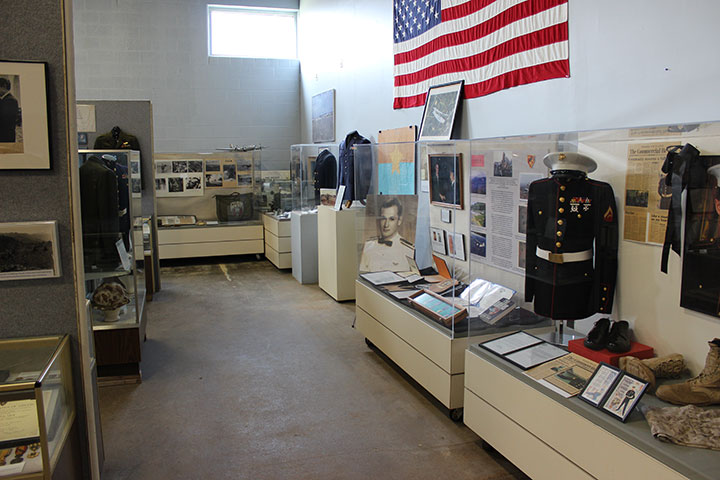
The museum operators have done an excellent job in laying out the
displays while keeping all in an orderly fashion.
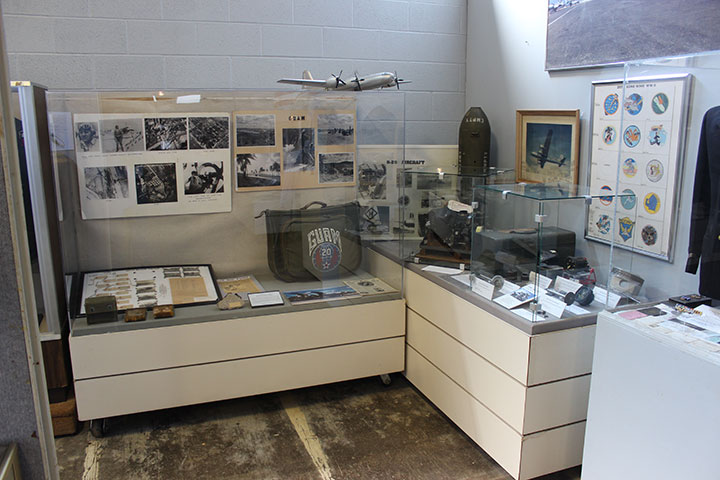
This corner display featured the B-29's role in WWII.
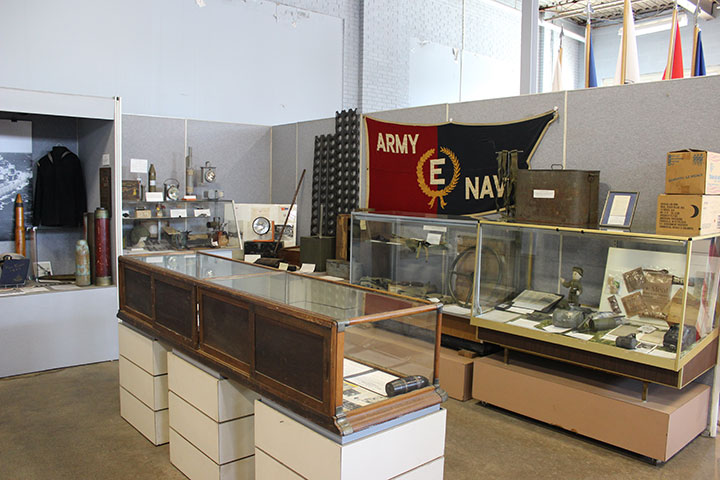
This section features products and companies from Indiana that provided
military products for WWII and after. The Army-Navy "E for
Excellence" flag on display was highly coveted by companies during WWII
supplying the military. This one was won by the Portland Forge for
the supply of 81mm mortar shells.
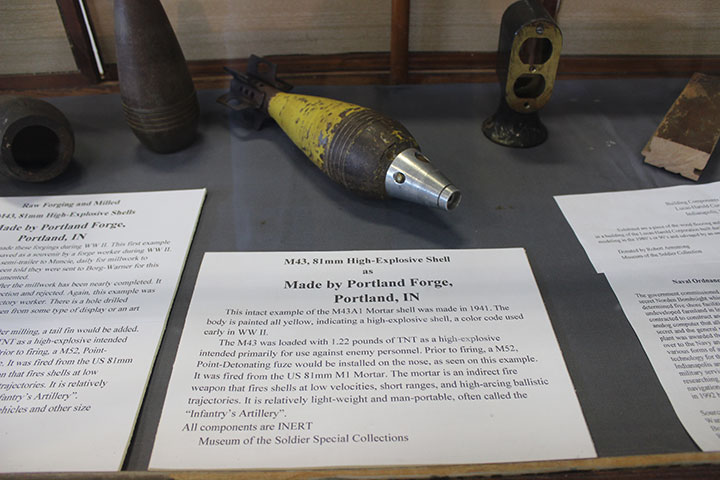
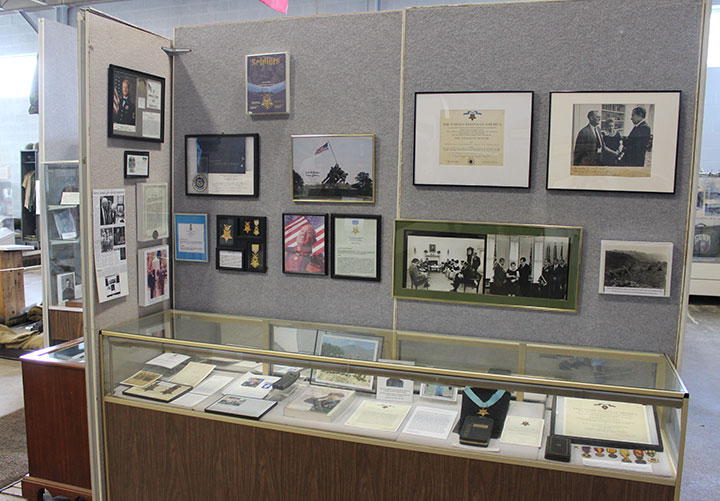
This display is on Medal of Honor winners.
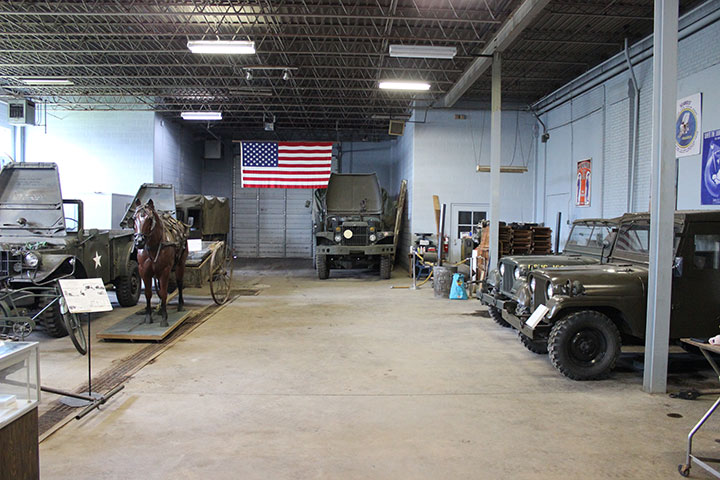
The museum has a second room which contains several vehicles and
displays. Shown here are two M38 Jeeps, an M35 2-1/2 ton truck,
and an M37 3/4 ton truck. The horse is pulling a WWI ammunition
cart.
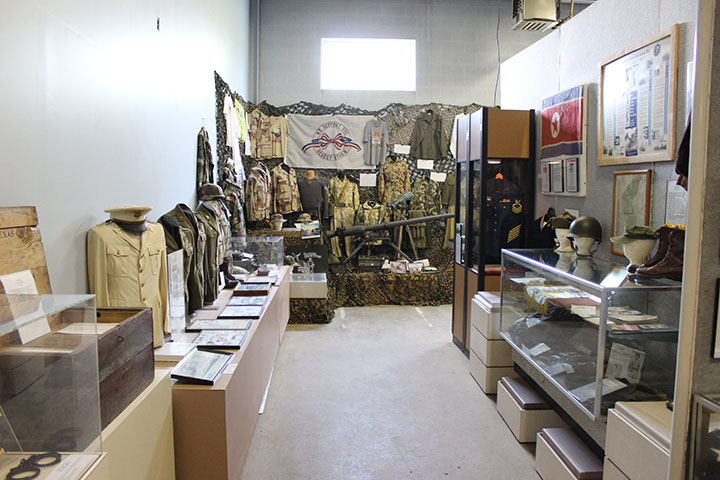
Just inside the door to the back room is this display with a Desert
Storm area at the end.
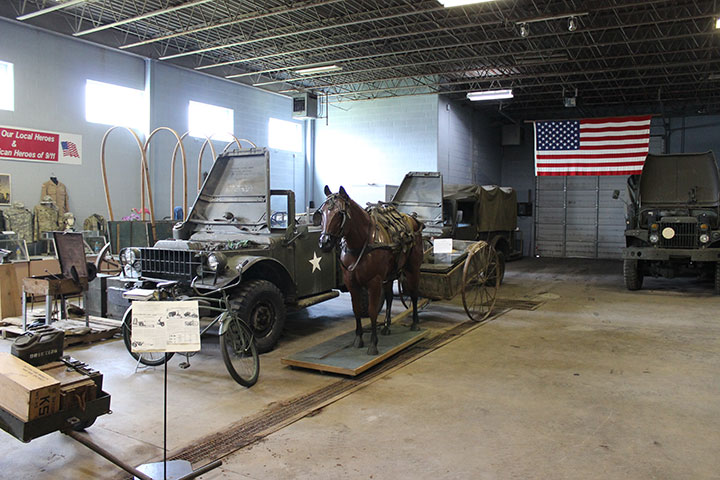
There is also a WWII bicycle,

This wagon was of the most interest to me because it is a 1899-1917 US
Army Escort Wagon built by the Studebaker Wagon Company of South Bend,
IN. Studebaker started building wagons in 1852 and continued in
business until1963.
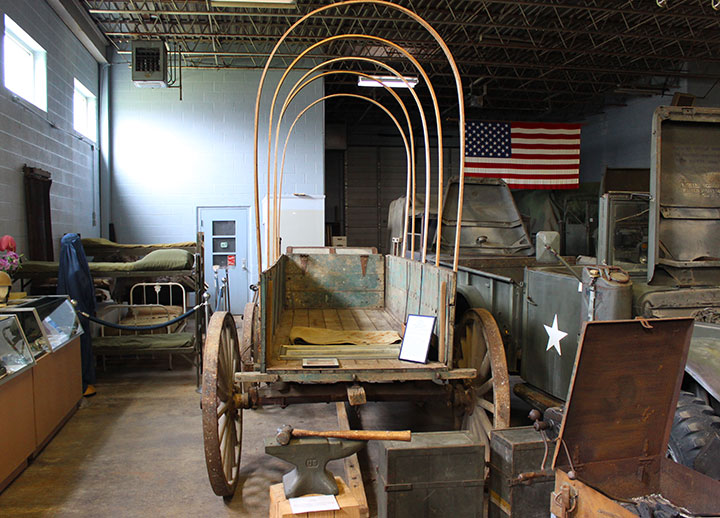
One of the wheels on the wagon was made in Anderson, IN, where I reside.
Portland Military
Vehicle Preservation Association (MVPA) display at the Jay County
Fairgrounds, September 19-20, 2014.
Hosted by the Museum of the Soldier.
I was not sure what to expect of a military vehicle display in a
rather remote location in Indiana. I was pleasantly surprised by
the number of vehicles and the rarity of several on display.
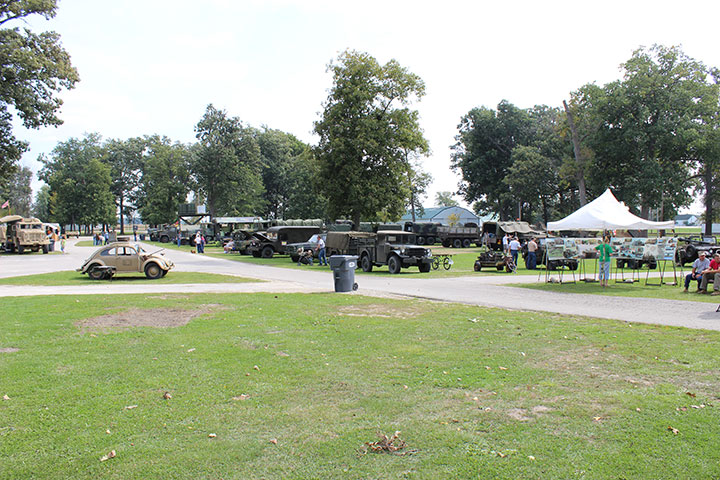
There were two reasons for my visit to Portland, IN. One was to
visit the museum, and the other to visit the military vehicle display
hosted by the museum. There was an excellent turnout of vehicles and the
late summer weather was perfect. Warm and sunny.
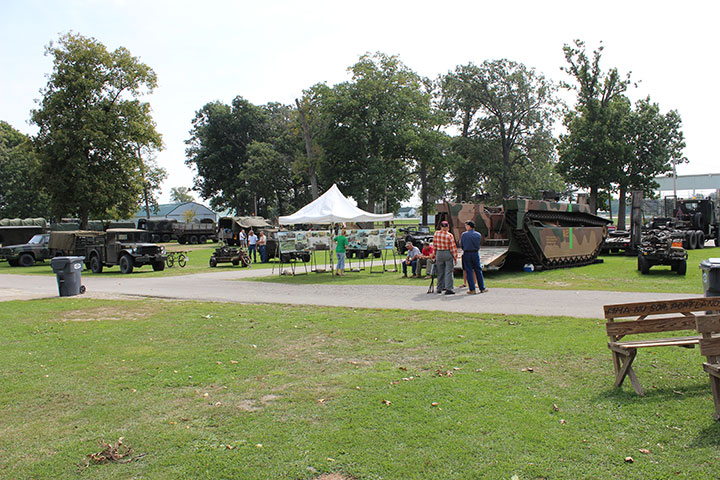
The fairgrounds are just a few blocks from
the museum.
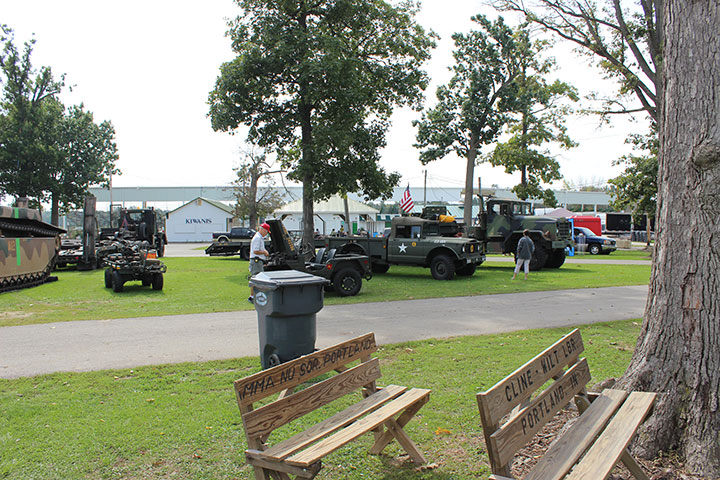
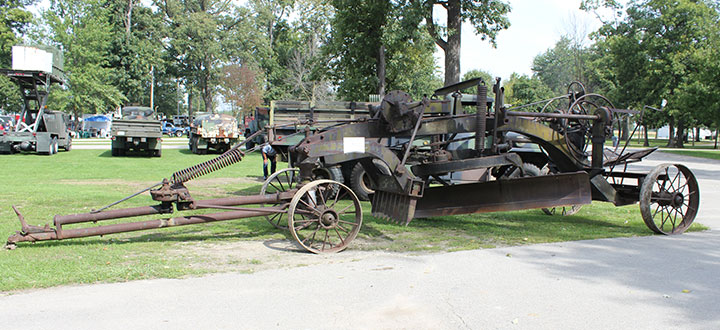
This non propelled road grader type was used by Army Engineers during
WWII to build airfields and maintain roads for truck traffic.
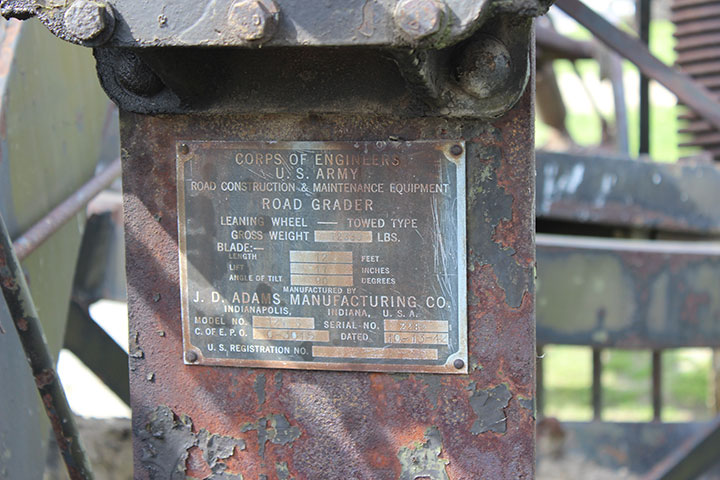
The road grader would be pulled by a prime mover when in operation.
It was built in Indianapolis in on 10-13-1942 by the JD Adams
Manufacturing Company.
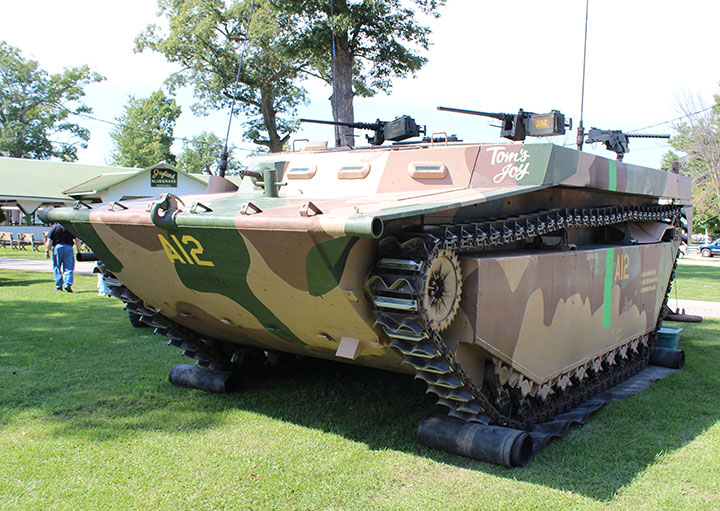
One never knows what interesting and rare vehicles that will be on
display. This LVT-4 "Water Buffalo" was a welcome surprise, as
they are very rare. And this one is a movie star, having been used
in the 2005 movie "Flags of our Fathers".
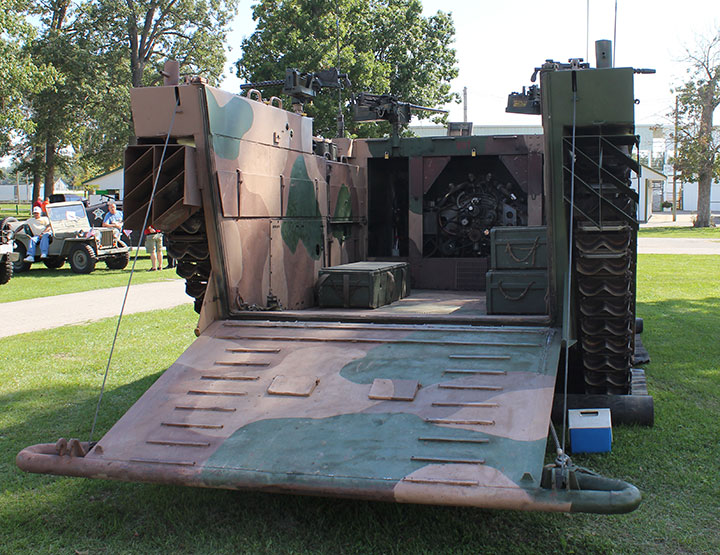
The LVT-4 was the first of the series to have a ramp. Previously
Marines and soldiers had to jump over the side to exit. While this
type vehicle is most recognized as being used by the Marine Corps in the
Pacific, the US Army, being much larger, took delivery of the majority
of LVTs. LVT-4s in particular were used to cross the Rhine River.
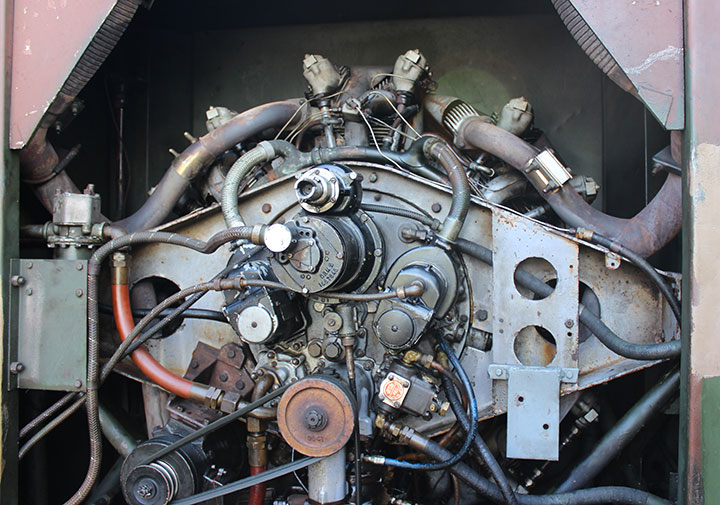
The LVT-4 was powered by a Continental R-670-9A seven cylinder radial
aircraft engine producing 250 hp. The radial engines, being
originally designed to operate at relatively constant speeds for
aircraft, did not work out well when having to constantly change RPMs
when being shifted through the five speeds of the Spicer transmission.
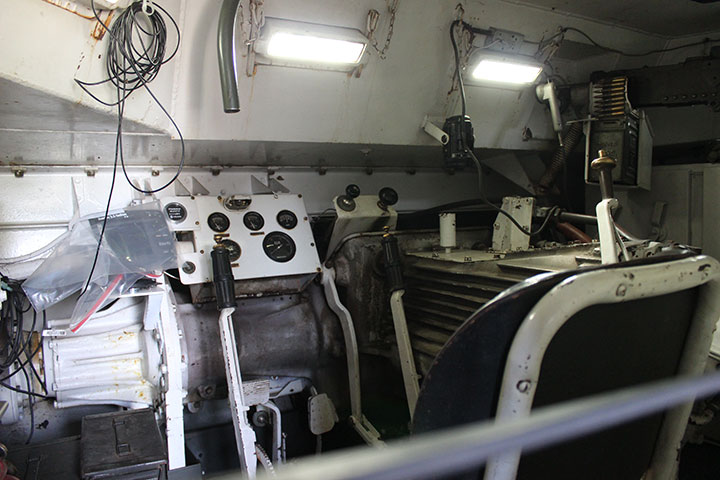
The driver's station with the Spicer transmission to the right and the
powered axle in front.
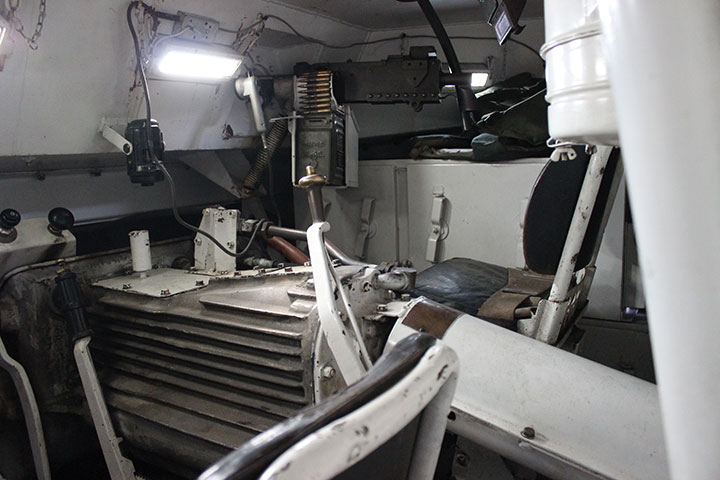
The gunner's position. One can seen
the transmission better in this photo and the covering over the
driveshaft from the engine.
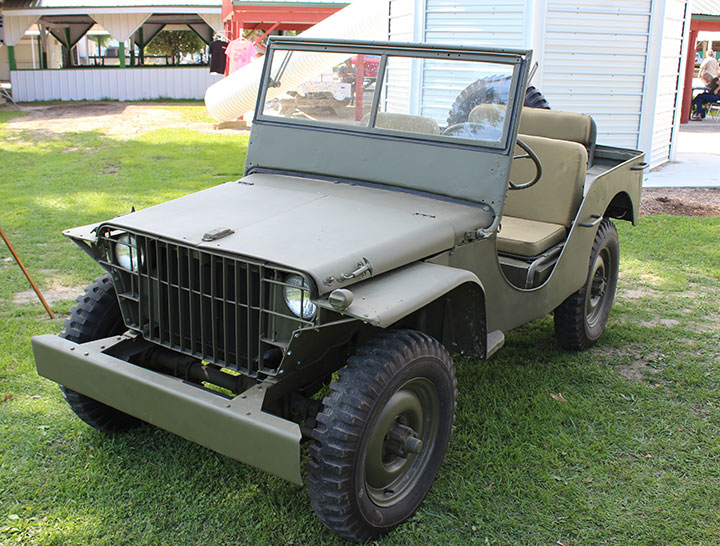
This Ford jeep is another rare vehicle, being one of the 1,500 the
company produced for testing by the military. This was the final
Ford version of the of the jeep that was tested against the
Willys-Overland MB that was picked to be the new 1/4 ton truck.
The Ford prototype was overweight and had transmission issues.
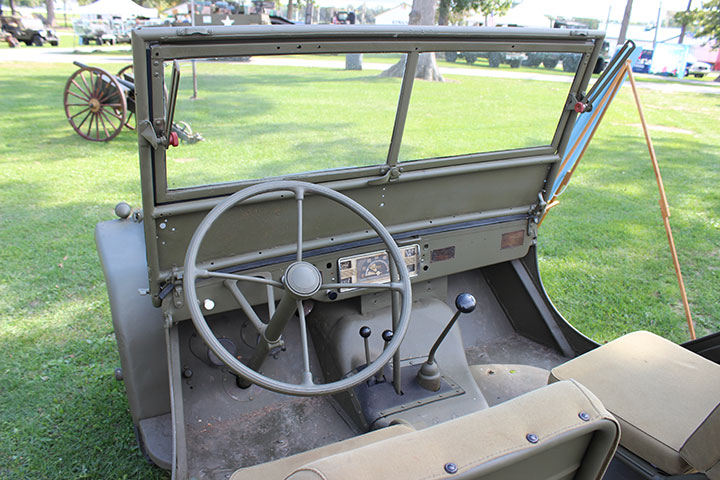
Note civilian vehicle type instrument cluster. This was common in
early military vehicles produced by not only Ford, but Dodge, Chevrolet
and GMC as well.
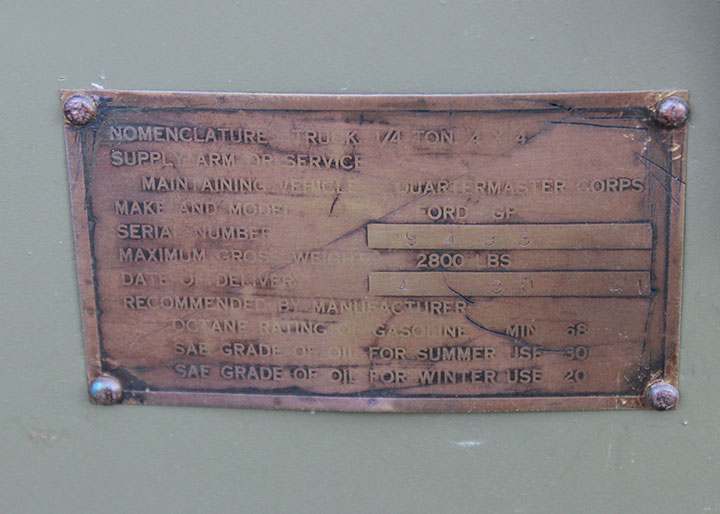
The ID tags shows this is a Ford GP built on 4-30-1941. The GP in
Ford nomenclature designated "G" for government and "P" for 80 inch
wheelbase, not "General Purpose" as is thought by some.
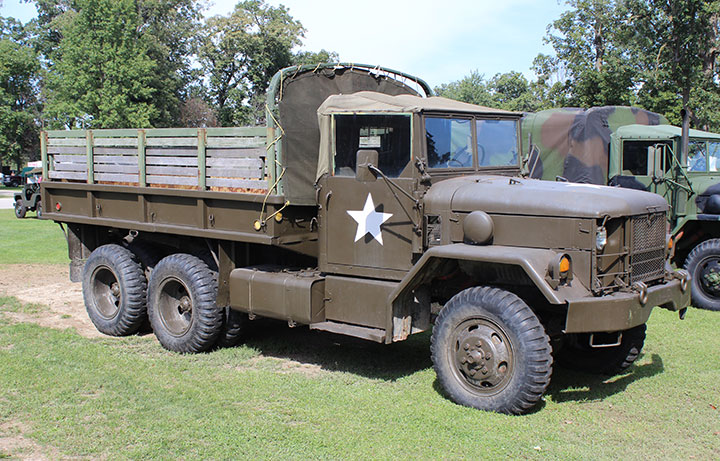
Just about the end of the line for Studebaker military vehicles, whether
Escort Wagons like the one in the Museum or this 1962 2-1/2 ton 6x6
M35A1 cargo truck, as the company went out of business in the US in
December of 1963. The M35 is based on a 1949 design by the Reo
Truck Company in Lansing, MI and was an improved version of the WWII
2-1/2 ton truck. Reo, Studebaker, Kaiser-Jeep and AM General all
built the M35. Even Curtiss-Wright got into the act and built 150
dump truck versions.
During WWII there were
three different designed and built 2-1/2 ton trucks. GMC in
Pontiac, MI was the largest producer and its trucks went to the US Army
and some overseas Lend Lease. International Harvester in Fort
Wayne, IN had its own version of the vehicle that went to the US Navy
and Marine Corps, with some Lend Lease also.
Studebaker in South Bend,
IN developed its own design within the military specifications which
were all Lend Lease, mostly going to Russia. Studebaker built over
197,000 of the WWII trucks and Reo in Lansing, MI built another 22,000
under license from Studebaker. The interesting point is the role
reversal for design and manufacture of the trucks between Studebaker and
Reo during WWII and after WWII.
On April 16, 1945 when
three Russian armies began their final attack on Berlin, they had
between them 6,250 tanks, 7,500 aircraft, 41,600 artillery pieces, 3,255
multiple rocket launchers known as Stalin's Organs, and 96,383 trucks.
The trucks were for the most part all Studebaker, Reo, International
Harvester 2-1/2 ton 6x6 trucks along with Ford 2-1/2 ton 4x2 trucks.
The Stalin Organs were mounted on Studebaker trucks, making the South
Bend, IN built truck one of the most deadly weapons of WWII.
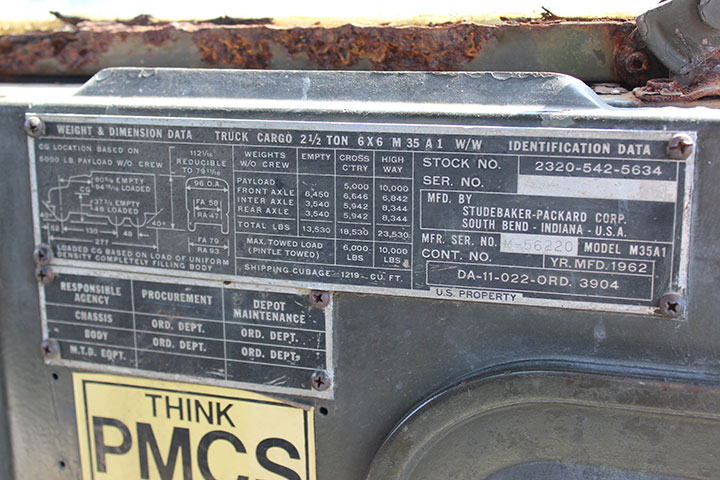
The nameplate shows this M35A1 was built in 1962 by what was then the
Studebaker-Packard Corporation. In the late 1950's General Motors
and Ford got involved in a price war to try and increase their
respective market shares in the US auto market. For the small
independent auto makers the only hopeful route to survival was joining
forces. Nash-Kelvinator and Hudson became American Motors which
was successful for many years while the Studebaker-Packard combination
ended its production in South-Bend in December of 1963. The
company survived in Hamilton, ONT, Canada producing cars until early
1966.
PMCS stands for "Preventive Maintenance
Checks and Services".
|






























